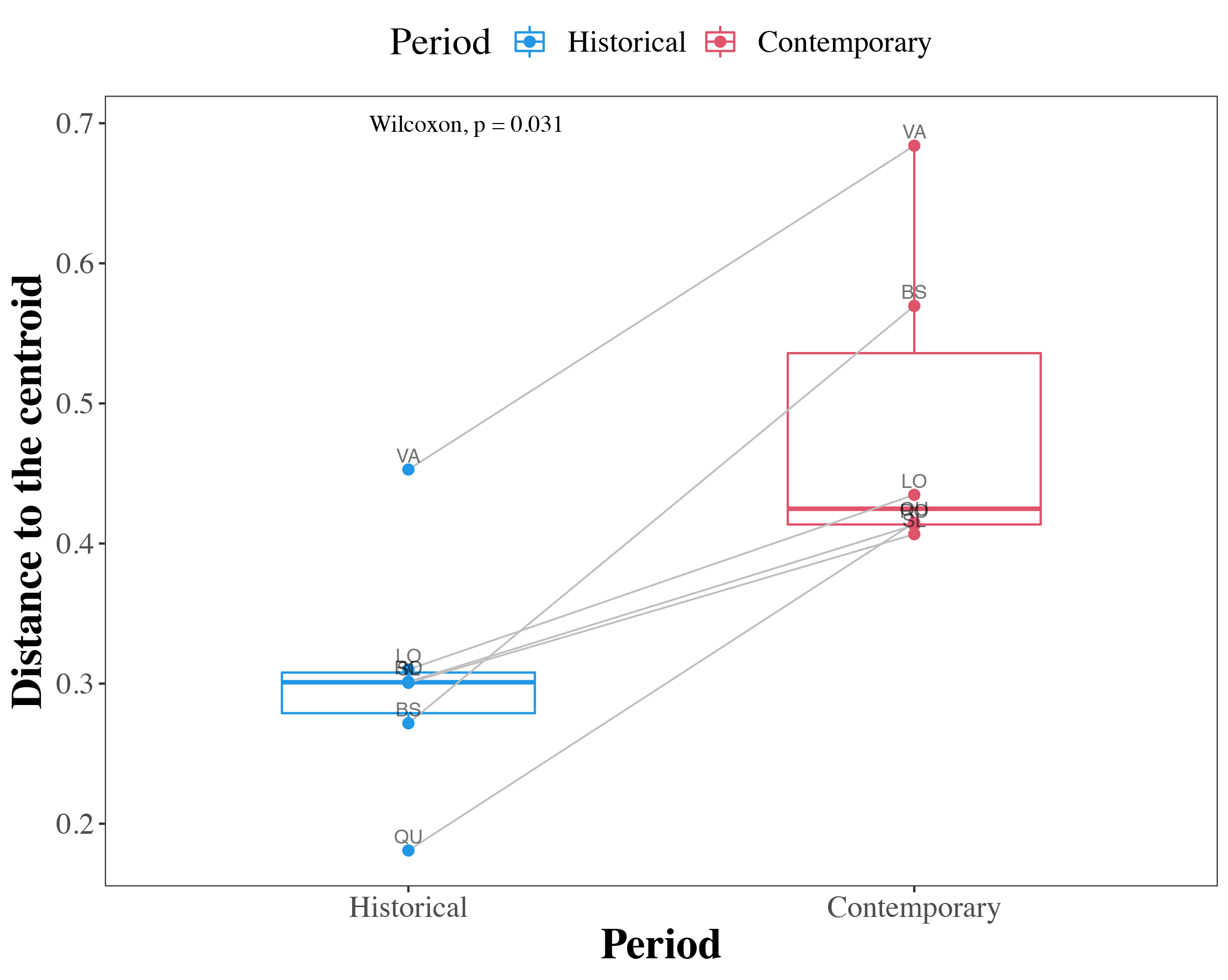Abstract
This study evaluated fish beta diversity in six headwater creeks located in the area affected by the largest ornamental aquaculture center implemented in the Minas Gerais State, southeastern Brazil. We sampled fish assemblages in 2017 and 2018 to investigate changes in assemblage structure (species richness and beta diversity), comparing these data with the historic species pool. We recorded 60 fish species, of which 16 were native and 44 non-native with 19 translocated, and 25 exotic. The exotics Poecilia reticulata, Xiphophorus maculatus, X. variatus, Danio rerio, and Misgurnus anguillicaudatus were the most widely distributed in the headwater creeks. The Contamination Index showed that most creeks had high proportional contamination by exotic species (above 60%). Beta diversity increased from historical to contemporary periods in all creeks due to the introduction and differential colonization pressure of several non-native translocated and exotic species, indicating biotic differentiation. Temperature and number of ponds were the main preditors of change in beta diversity in the headwater creeks during the contemporary period. In summary, we observed that invaders have induced substantial changes to fish communities under influence of environmental filters. Our results support the hipothesis that aquaculture is a main driver of fish non-native fish introduction and native biodiversity loss in the Neotropics.
Keywords:
Aquaculture; Aquarium trade; Beta diversity; Escapes; Invasive species

 Thumbnail
Thumbnail
 Thumbnail
Thumbnail
 Thumbnail
Thumbnail
 Thumbnail
Thumbnail
 Thumbnail
Thumbnail
 Thumbnail
Thumbnail





